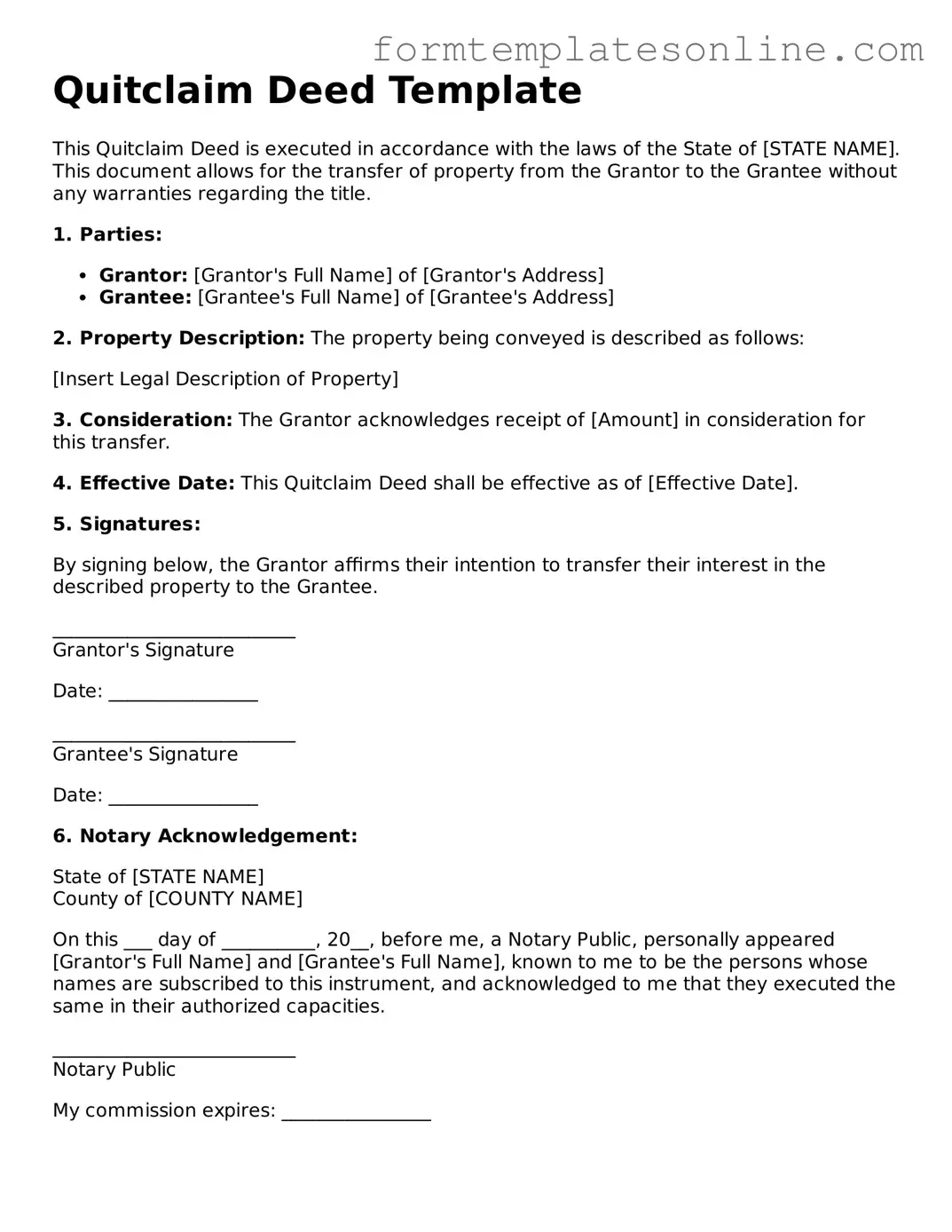Quitclaim Deed Template
This Quitclaim Deed is executed in accordance with the laws of the State of [STATE NAME]. This document allows for the transfer of property from the Grantor to the Grantee without any warranties regarding the title.
1. Parties:
- Grantor: [Grantor's Full Name] of [Grantor's Address]
- Grantee: [Grantee's Full Name] of [Grantee's Address]
2. Property Description: The property being conveyed is described as follows:
[Insert Legal Description of Property]
3. Consideration: The Grantor acknowledges receipt of [Amount] in consideration for this transfer.
4. Effective Date: This Quitclaim Deed shall be effective as of [Effective Date].
5. Signatures:
By signing below, the Grantor affirms their intention to transfer their interest in the described property to the Grantee.
__________________________
Grantor's Signature
Date: ________________
__________________________
Grantee's Signature
Date: ________________
6. Notary Acknowledgement:
State of [STATE NAME]
County of [COUNTY NAME]
On this ___ day of __________, 20__, before me, a Notary Public, personally appeared [Grantor's Full Name] and [Grantee's Full Name], known to me to be the persons whose names are subscribed to this instrument, and acknowledged to me that they executed the same in their authorized capacities.
__________________________
Notary Public
My commission expires: ________________
